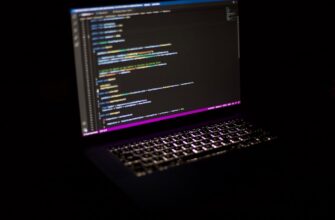- What Is the Bitcoin Mining Halving Countdown?
- Why the Bitcoin Halving Countdown Matters
- Bitcoin Halving Countdown: Key Dates and Timeline
- How the Halving Affects Bitcoin Miners
- Historical Impact of Bitcoin Halvings
- Preparing for the 2024 Bitcoin Halving: Tips for Miners and Investors
- Bitcoin Halving Countdown FAQ
What Is the Bitcoin Mining Halving Countdown?
The Bitcoin mining halving countdown refers to the period leading up to the next halving event, a pre-programmed reduction in the block reward miners receive for validating transactions on the Bitcoin network. Occurring approximately every four years (or every 210,000 blocks), this event cuts the reward for mining new blocks by 50%. With the next halving expected in April 2024, the crypto community is buzzing about its potential impact on miners, investors, and the broader market.
Why the Bitcoin Halving Countdown Matters
The halving is a cornerstone of Bitcoin’s deflationary design, ensuring that only 21 million BTC will ever exist. Here’s why the countdown is critical:
- Scarcity: Reduced supply growth could increase Bitcoin’s value if demand remains steady.
- Miner Economics: Miners face a 50% drop in revenue overnight, forcing efficiency upgrades or exits.
- Market Volatility: Historical data shows price surges post-halving, though past performance doesn’t guarantee future results.
Bitcoin Halving Countdown: Key Dates and Timeline
As of October 2023, the next halving is projected around April 20, 2024. The block reward will drop from 6.25 BTC to 3.125 BTC. Use live trackers to monitor the countdown, which updates in real-time as blocks are mined.
How the Halving Affects Bitcoin Miners
Miners must adapt quickly to survive post-halving:
- Profitability Squeeze: Lower rewards + rising energy costs = thinner margins.
- Hardware Upgrades: Outdated rigs (e.g., Antminer S9) may become unprofitable, pushing miners toward newer models like the Antminer S19 XP.
- Hash Rate Fluctuations: Less efficient miners may shut down, temporarily reducing network hash rate before a rebound.
Historical Impact of Bitcoin Halvings
- 2012 Halving: Reward fell from 50 to 25 BTC. Bitcoin’s price rose from $12 to $1,150 in a year.
- 2016 Halving: Reward dropped to 12.5 BTC. BTC surged from $650 to $20,000 by late 2017.
- 2020 Halving: Reward cut to 6.25 BTC. Price climbed from $8,700 to an all-time high of $69,000 in November 2021.
Preparing for the 2024 Bitcoin Halving: Tips for Miners and Investors
For Miners:
- Upgrade to energy-efficient ASICs.
- Join mining pools to stabilize earnings.
- Secure low-cost energy contracts.
For Investors:
- Dollar-cost average to mitigate volatility.
- Monitor hash rate trends as a network health indicator.
- Consider long-term holdings (“HODLing”) based on historical post-halving rallies.
Bitcoin Halving Countdown FAQ
Q: What exactly is a Bitcoin halving?
A: A halving cuts the block reward miners earn by 50%, occurring every 210,000 blocks to control Bitcoin’s supply.
Q: When is the next Bitcoin halving?
A: Expected around April 2024, though the exact date depends on block production speed.
Q: How does halving affect Bitcoin’s price?
A: Reduced supply growth often correlates with bull markets, but external factors like regulations also play a role.
Q: Can the halving be delayed?
A: No—it’s automated in Bitcoin’s code and tied to block height, not time.
Q: What should miners do to prepare?
A: Optimize operational costs, upgrade hardware, and diversify revenue streams (e.g., mining alternative coins).








